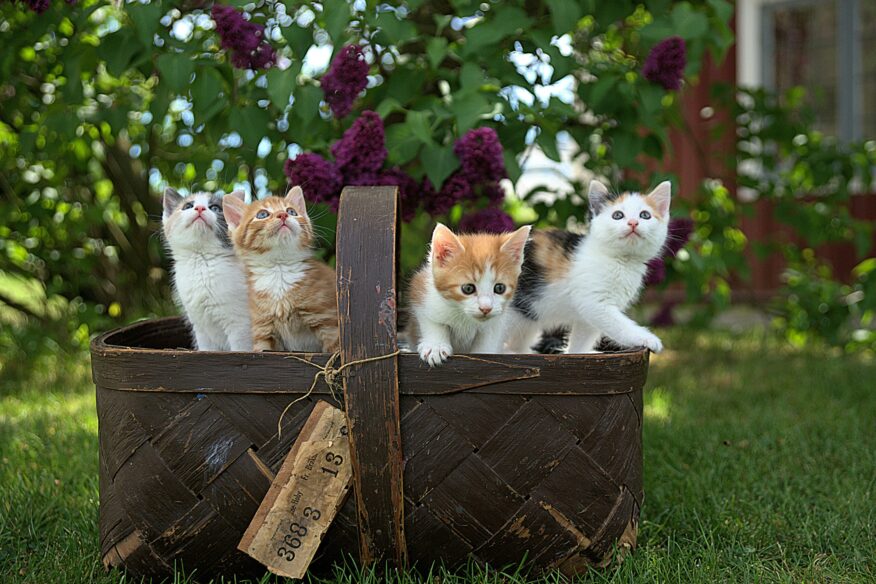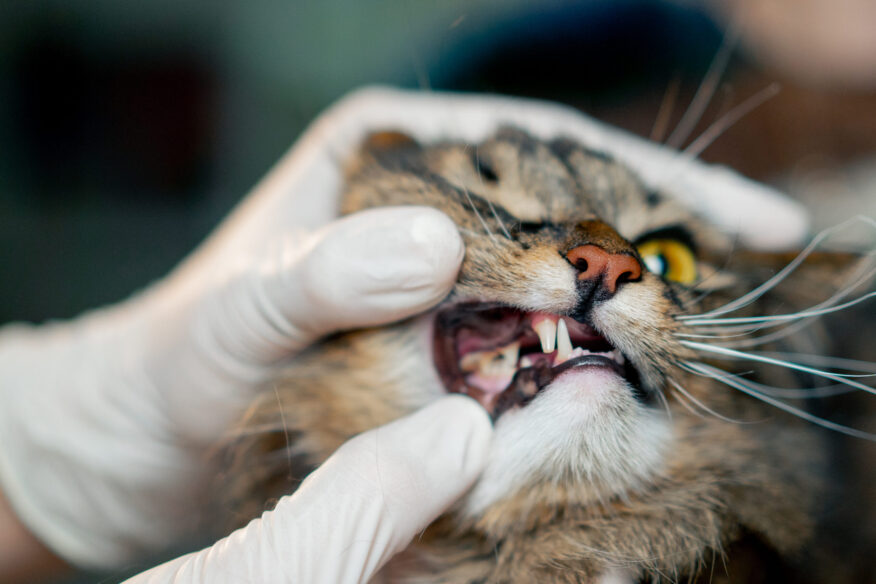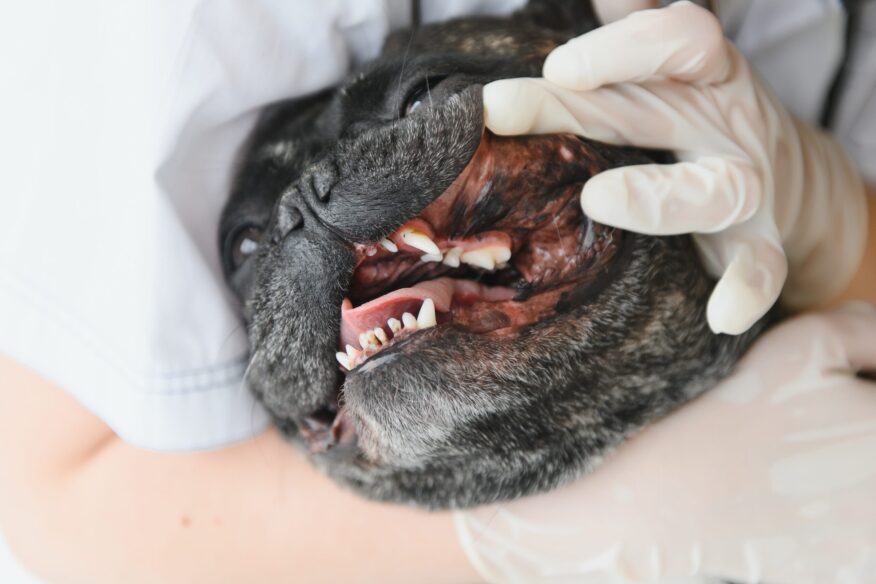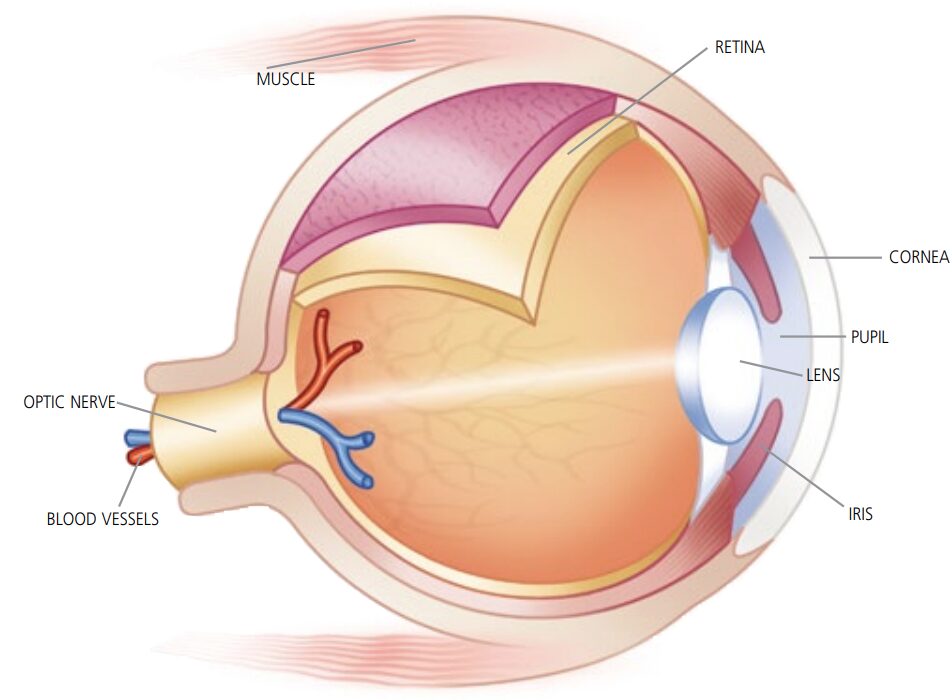
Common eye conditions and symptoms
CONJUNCTIVITIS is an inflammation of the membrane that covers both the inner lining of the eyelid and the white of the eye. It may be caused by allergies or by bacterial, fungal or viral infections. In fact, recurrent or chronic conjunctivitis in cats is often the result of herpes viral infections which, just as in humans, can return – again and again. It can be contagious, so keep an infected cat away from others.
CORNEAL ULCERATION can occur when the surface of the cornea is scratched or damaged, either as the result of a cat fight or, more seriously, a bacterial or viral infection.
WATERY EYES If your cat’s eyes constantly “weep”, or if the fur around them appears “stained”, he or she may suffer from an inherited defect in which a malformation of the tear ducts blocks the normal flow of tears.
CATARACTS & GLAUCOMA Cats, just like humans, can have these serious eye diseases. Cataracts, which cloud the lens inside the eye, are most often seen in elderly cats. A thorough evaluation by your veterinarian is necessary, as surgery is the only treatment. Glaucoma stems from too much pressure being exerted upon the eye’s interior as a result of a decrease in the amount of fluid draining from it.
A healthy cat’s eyes should be clear and bright and the area around the eyeball white.
Common symptoms of illness
- Red inner eyelids
- Matter ‘stuck’ on the surface or in the corners of the eye
- Cloudiness within the eyeball
- A dull eye surface
- The ‘third eyelid’ coming across the eye
- Excessive tearing or unusual discharges
- Tear-stained fur around the eyes
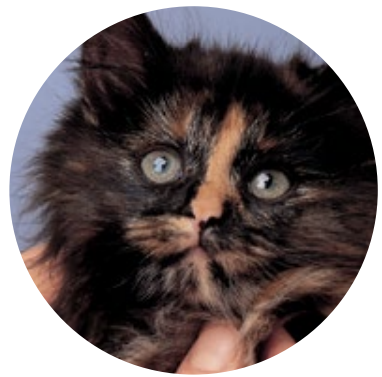
Tests used to diagnose eye problems
- Fluorescein stain to identify the presence of corneal ulcers
- Schirmer Tear Test to determine the level of tear production
- Ocular pressure to detect glaucoma
- Ophthalmoscope to see in the eye chamber
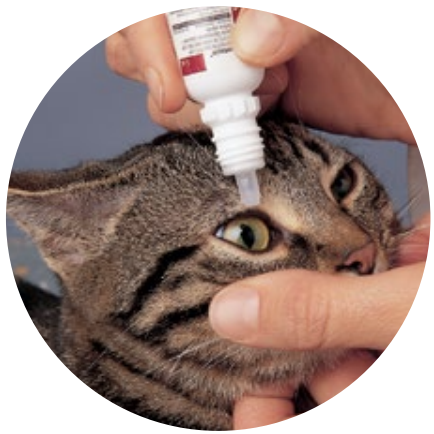
How to administer eye drops
- Remove any discharge around the eye with a cotton ball moistened with warm water.
- Hold your cat sideways on your lap or place him or her on a table at a comfortable height (you may want someone to help restrain your cat if you choose the second option).
- See the instructions on the bottle for dosage. Shake if necessary.
- Use one hand to hold the bottle between thumb and index finger while using the other hand to support the cat’s head.
- Tilt the head back and, to prevent blinking, use your free fingers to hold the eyelids open.
- Hold the bottle of drops close to the eye, but DON’T touch the eye’s surface.
- Squeeze, aiming the drops at the centre of the eye, then release the head after the drop is in the eye.
- Your cat will blink, spreading the medication over the eye’s surface.

How to apply eye ointment
- Remove any discharge around the eye with a cotton ball moistened with warm water.
- Hold your cat sideways on your lap or place him or her on a table at a comfortable height (you
may want someone to help restrain your cat if you choose the second option). - Check the instructions on the tube for dosage.
- Gently pull back upper and lower eyelids.
- Hold the tube parallel to the lower eyelid, squeeze out the ointment onto the edge of the eyelid.
- Release the head and let your cat blink.
- If necessary massage upper and lower eyelids together to spread the medication.


